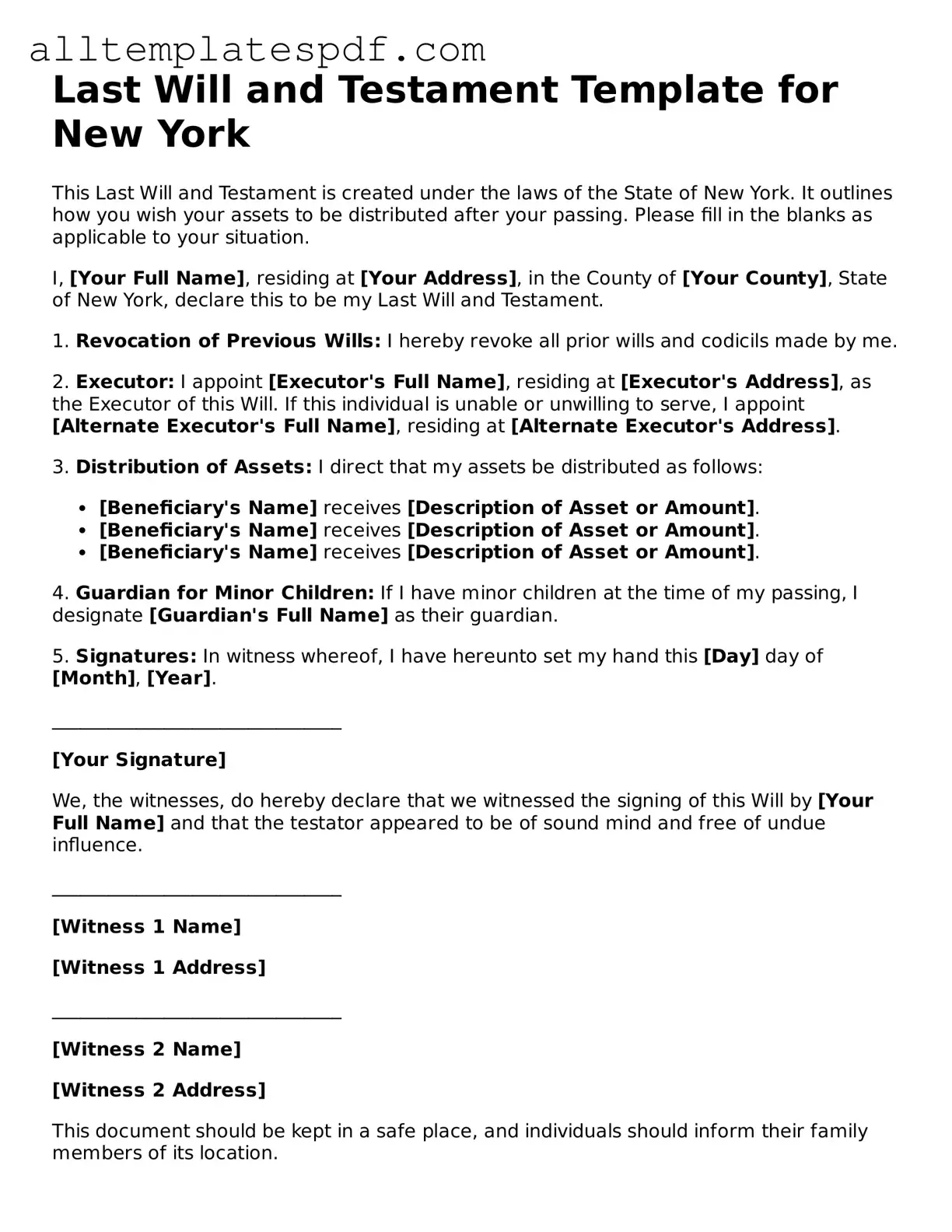Filling out a Last Will and Testament form in New York can be a straightforward process, but many individuals make common mistakes that can lead to complications. One frequent error is not clearly identifying the testator. It is essential to include the full legal name and address of the person creating the will. Omitting this information can create confusion about the will's validity.
Another mistake involves failing to properly date the document. A will should always be dated to establish when it was created. Without a date, it may be difficult to determine if this will supersedes any previous versions. This can lead to disputes among heirs and beneficiaries.
Many individuals also neglect to sign the will in the presence of witnesses. In New York, the law requires at least two witnesses to be present when the testator signs the will. If this step is skipped, the will may be deemed invalid, and the individual's wishes may not be honored.
Additionally, people often forget to include a residuary clause. This clause outlines how to distribute any remaining assets not specifically mentioned in the will. Without it, there may be ambiguity regarding the distribution of assets, which can lead to unintended consequences.
Another common oversight is not updating the will after major life events. Changes such as marriage, divorce, or the birth of a child should prompt a review and possible revision of the will. Failing to make these updates can result in outdated provisions that do not reflect current intentions.
Some individuals mistakenly assume that a handwritten will is automatically valid. While New York does recognize handwritten wills, they must still meet specific criteria to be enforceable. It is advisable to use a formal template to ensure compliance with legal standards.
Moreover, neglecting to communicate the contents of the will to family members can create confusion and conflict. It is beneficial to discuss the will openly with loved ones to prevent misunderstandings and ensure that everyone is aware of the testator's wishes.
People sometimes overlook the importance of choosing appropriate executors. An executor is responsible for managing the estate and ensuring that the will is executed according to the testator's wishes. Selecting someone who is unqualified or unwilling to take on this responsibility can lead to complications during the probate process.
Finally, failing to store the will in a safe and accessible location is a critical mistake. The will should be kept in a secure place, such as a safe deposit box or with a trusted attorney. If the will cannot be found after the testator's death, it may not be honored, resulting in the estate being distributed according to state law rather than the testator's wishes.
